Sandra Carberry
Department of Computer and Information Sciences, University of Delaware
Automatically Selecting Useful Phrases for Dialogue Act Tagging
Jun 18, 1999
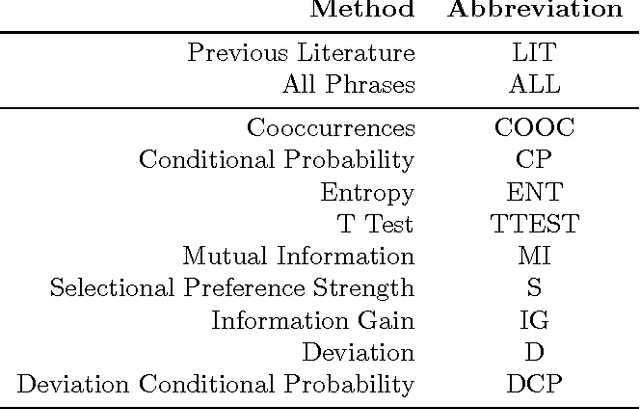
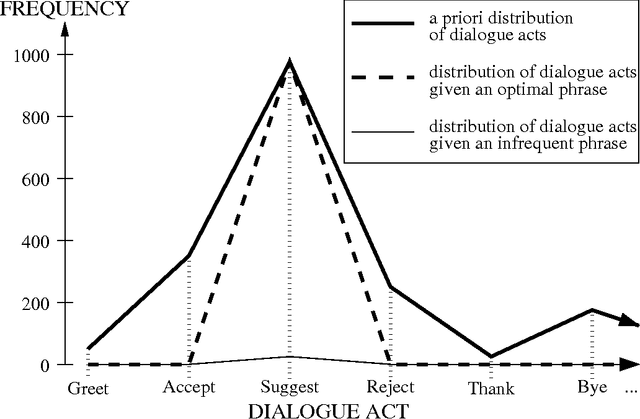

Abstract:We present an empirical investigation of various ways to automatically identify phrases in a tagged corpus that are useful for dialogue act tagging. We found that a new method (which measures a phrase's deviation from an optimally-predictive phrase), enhanced with a lexical filtering mechanism, produces significantly better cues than manually-selected cue phrases, the exhaustive set of phrases in a training corpus, and phrases chosen by traditional metrics, like mutual information and information gain.
* 14 pages, published in PACLING'99
An Investigation of Transformation-Based Learning in Discourse
Jun 09, 1998
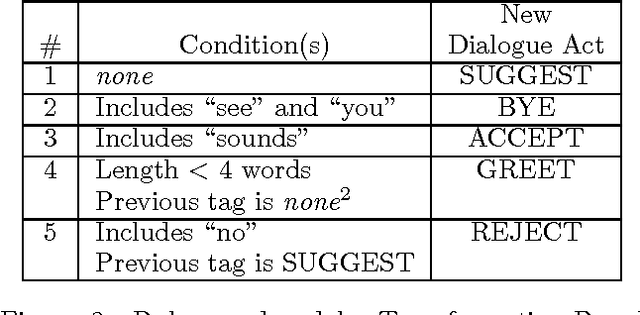
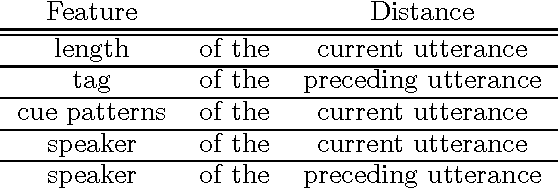
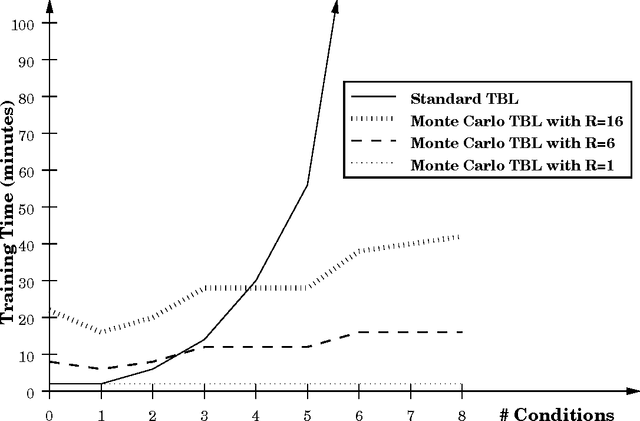
Abstract:This paper presents results from the first attempt to apply Transformation-Based Learning to a discourse-level Natural Language Processing task. To address two limitations of the standard algorithm, we developed a Monte Carlo version of Transformation-Based Learning to make the method tractable for a wider range of problems without degradation in accuracy, and we devised a committee method for assigning confidence measures to tags produced by Transformation-Based Learning. The paper describes these advances, presents experimental evidence that Transformation-Based Learning is as effective as alternative approaches (such as Decision Trees and N-Grams) for a discourse task called Dialogue Act Tagging, and argues that Transformation-Based Learning has desirable features that make it particularly appealing for the Dialogue Act Tagging task.
* 9 pages, 3 Postscript figure, uses ml98.sty
Dialogue Act Tagging with Transformation-Based Learning
Jun 08, 1998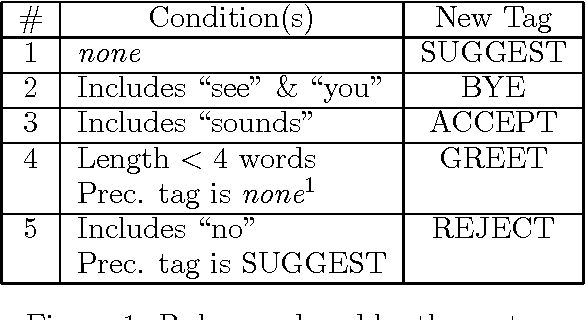


Abstract:For the task of recognizing dialogue acts, we are applying the Transformation-Based Learning (TBL) machine learning algorithm. To circumvent a sparse data problem, we extract values of well-motivated features of utterances, such as speaker direction, punctuation marks, and a new feature, called dialogue act cues, which we find to be more effective than cue phrases and word n-grams in practice. We present strategies for constructing a set of dialogue act cues automatically by minimizing the entropy of the distribution of dialogue acts in a training corpus, filtering out irrelevant dialogue act cues, and clustering semantically-related words. In addition, to address limitations of TBL, we introduce a Monte Carlo strategy for training efficiently and a committee method for computing confidence measures. These ideas are combined in our working implementation, which labels held-out data as accurately as any other reported system for the dialogue act tagging task.
* 7 pages, no Postscript figures, uses colacl.sty and acl.bst
Computing Dialogue Acts from Features with Transformation-Based Learning
Jun 02, 1998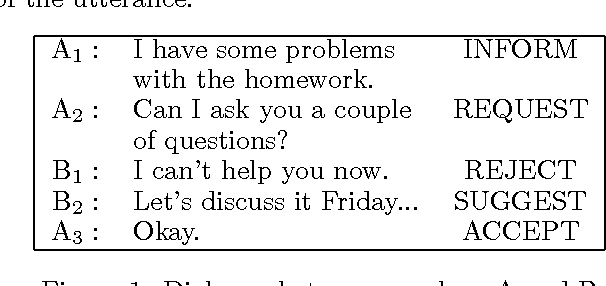
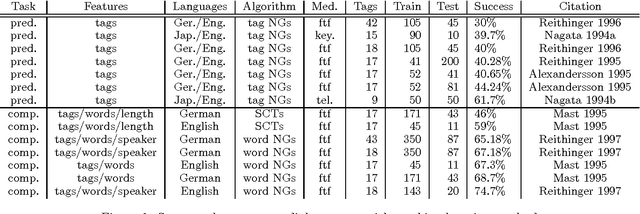


Abstract:To interpret natural language at the discourse level, it is very useful to accurately recognize dialogue acts, such as SUGGEST, in identifying speaker intentions. Our research explores the utility of a machine learning method called Transformation-Based Learning (TBL) in computing dialogue acts, because TBL has a number of advantages over alternative approaches for this application. We have identified some extensions to TBL that are necessary in order to address the limitations of the original algorithm and the particular demands of discourse processing. We use a Monte Carlo strategy to increase the applicability of the TBL method, and we select features of utterances that can be used as input to improve the performance of TBL. Our system is currently being tested on the VerbMobil corpora of spoken dialogues, producing promising preliminary results.
* 8 pages, 1 Postscript figure, uses aaai.sty and aaai.bst
Integrating Text Plans for Conciseness and Coherence
May 28, 1998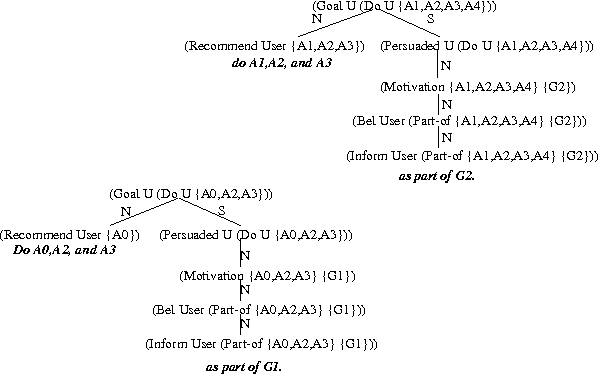


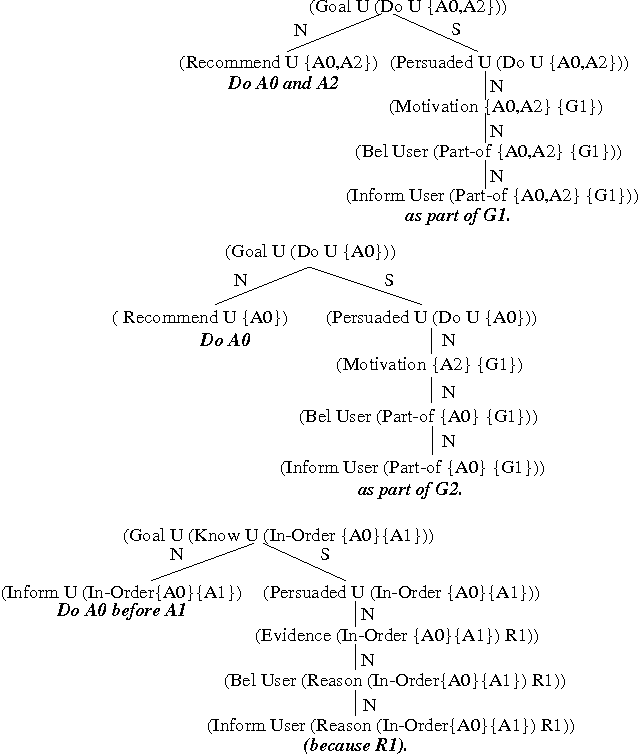
Abstract:Our experience with a critiquing system shows that when the system detects problems with the user's performance, multiple critiques are often produced. Analysis of a corpus of actual critiques revealed that even though each individual critique is concise and coherent, the set of critiques as a whole may exhibit several problems that detract from conciseness and coherence, and consequently assimilation. Thus a text planner was needed that could integrate the text plans for individual communicative goals to produce an overall text plan representing a concise, coherent message. This paper presents our general rule-based system for accomplishing this task. The system takes as input a \emph{set} of individual text plans represented as RST-style trees, and produces a smaller set of more complex trees representing integrated messages that still achieve the multiple communicative goals of the individual text plans. Domain-independent rules are used to capture strategies across domains, while the facility for addition of domain-dependent rules enables the system to be tuned to the requirements of a particular domain. The system has been tested on a corpus of critiques in the domain of trauma care.
* 7 pages, 7 Postscript figures, uses colacl.sty
Generating Coherent Messages in Real-time Decision Support: Exploiting Discourse Theory for Discourse Practice
Jul 28, 1997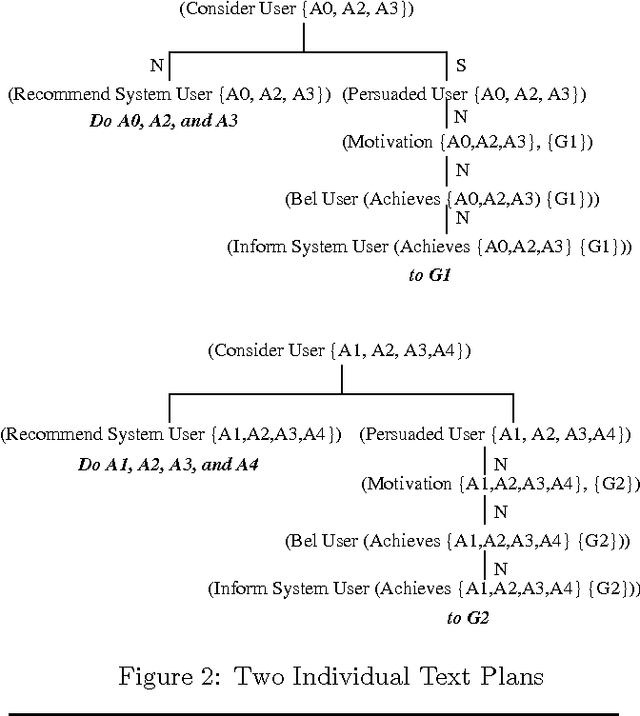


Abstract:This paper presents a message planner, TraumaGEN, that draws on rhetorical structure and discourse theory to address the problem of producing integrated messages from individual critiques, each of which is designed to achieve its own communicative goal. TraumaGEN takes into account the purpose of the messages, the situation in which the messages will be received, and the social role of the system.
* 6 pages
Generating Information-Sharing Subdialogues in Expert-User Consultation
Jan 06, 1997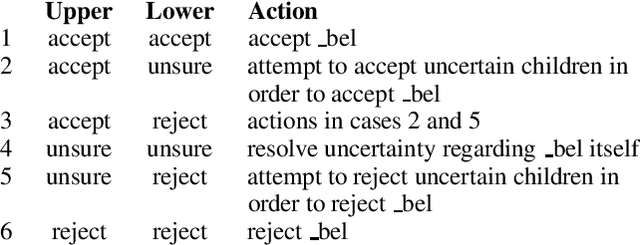
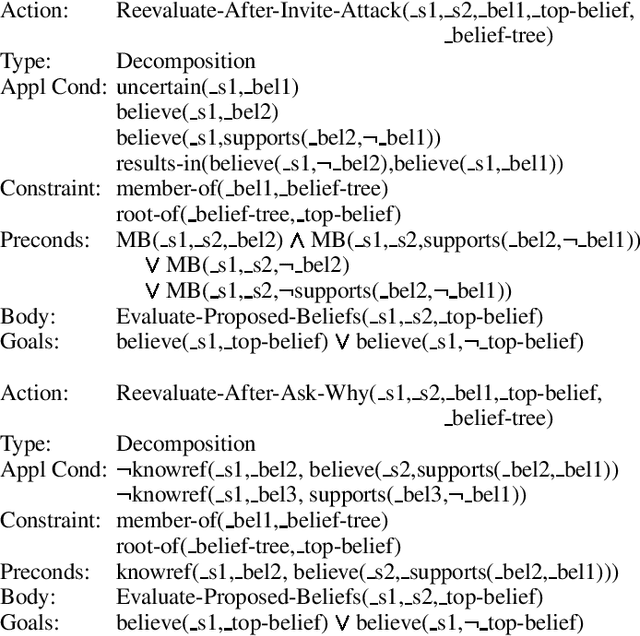
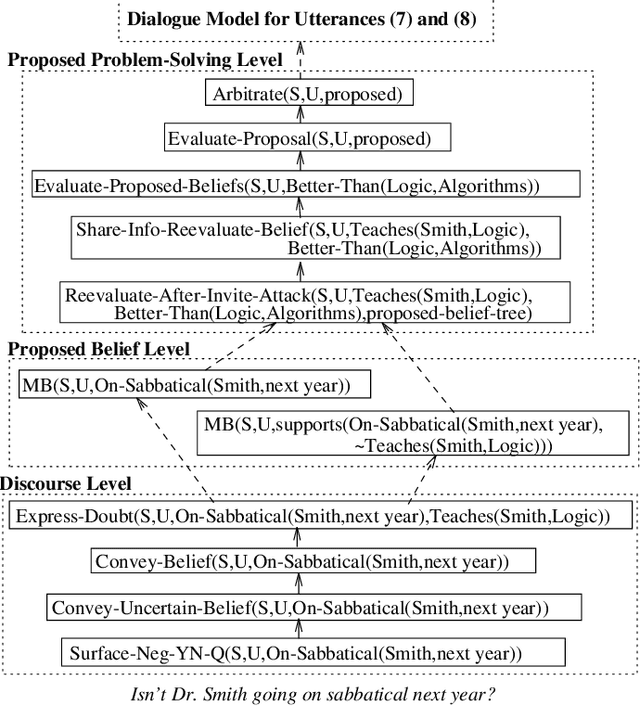
Abstract:In expert-consultation dialogues, it is inevitable that an agent will at times have insufficient information to determine whether to accept or reject a proposal by the other agent. This results in the need for the agent to initiate an information-sharing subdialogue to form a set of shared beliefs within which the agents can effectively re-evaluate the proposal. This paper presents a computational strategy for initiating such information-sharing subdialogues to resolve the system's uncertainty regarding the acceptance of a user proposal. Our model determines when information-sharing should be pursued, selects a focus of information-sharing among multiple uncertain beliefs, chooses the most effective information-sharing strategy, and utilizes the newly obtained information to re-evaluate the user proposal. Furthermore, our model is capable of handling embedded information-sharing subdialogues.
* 9 pages, 1 figure; uses epsf.sty, times.sty, and named
Response Generation in Collaborative Negotiation
May 01, 1995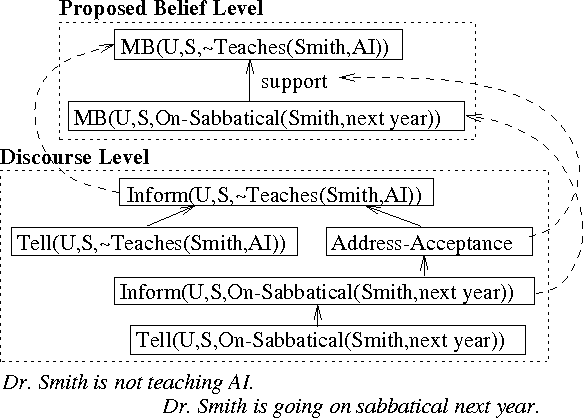
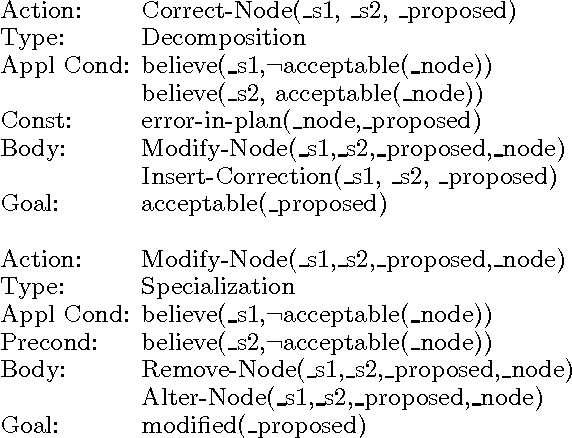
Abstract:In collaborative planning activities, since the agents are autonomous and heterogeneous, it is inevitable that conflicts arise in their beliefs during the planning process. In cases where such conflicts are relevant to the task at hand, the agents should engage in collaborative negotiation as an attempt to square away the discrepancies in their beliefs. This paper presents a computational strategy for detecting conflicts regarding proposed beliefs and for engaging in collaborative negotiation to resolve the conflicts that warrant resolution. Our model is capable of selecting the most effective aspect to address in its pursuit of conflict resolution in cases where multiple conflicts arise, and of selecting appropriate evidence to justify the need for such modification. Furthermore, by capturing the negotiation process in a recursive Propose-Evaluate-Modify cycle of actions, our model can successfully handle embedded negotiation subdialogues.
A Hybrid Reasoning Model for Indirect Answers
Jun 07, 1994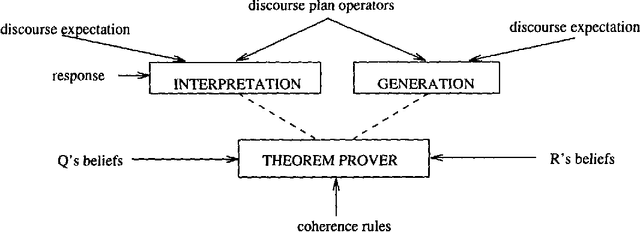
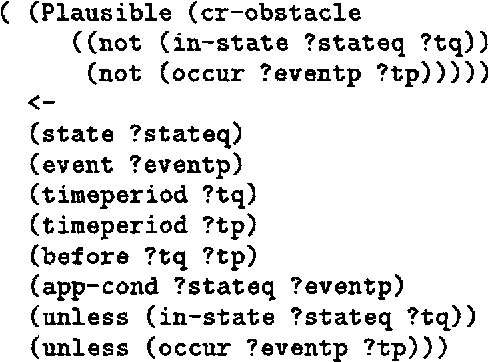
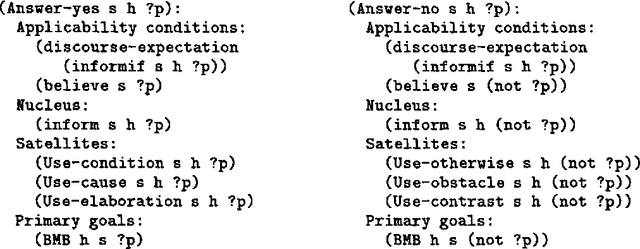
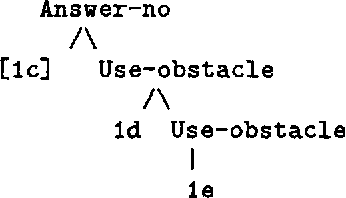
Abstract:This paper presents our implemented computational model for interpreting and generating indirect answers to Yes-No questions. Its main features are 1) a discourse-plan-based approach to implicature, 2) a reversible architecture for generation and interpretation, 3) a hybrid reasoning model that employs both plan inference and logical inference, and 4) use of stimulus conditions to model a speaker's motivation for providing appropriate, unrequested information. The model handles a wider range of types of indirect answers than previous computational models and has several significant advantages.
A Plan-Based Model for Response Generation in Collaborative Task-Oriented Dialogues
May 06, 1994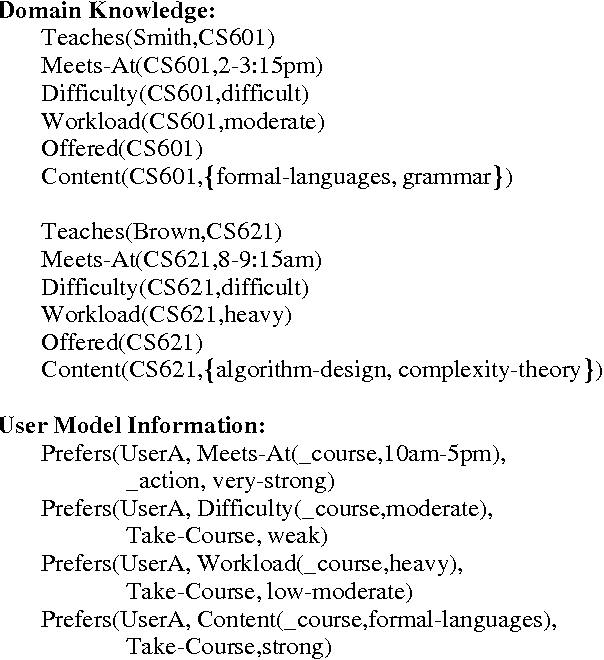
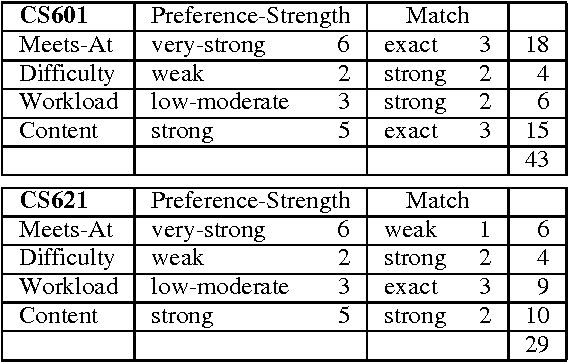
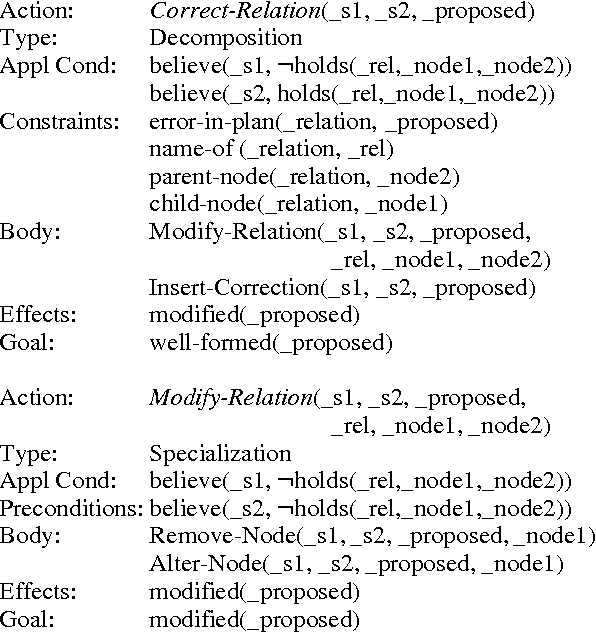
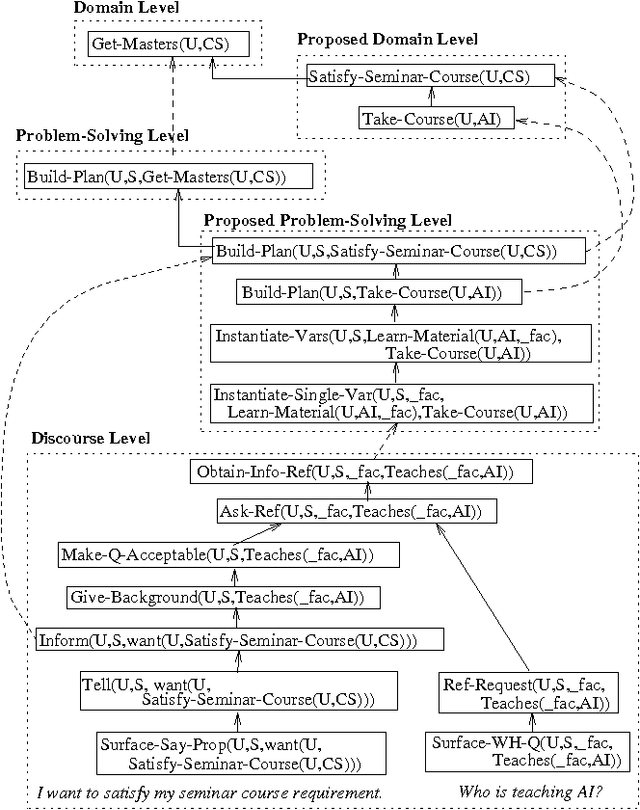
Abstract:This paper presents a plan-based architecture for response generation in collaborative consultation dialogues, with emphasis on cases in which the system (consultant) and user (executing agent) disagree. Our work contributes to an overall system for collaborative problem-solving by providing a plan-based framework that captures the {\em Propose-Evaluate-Modify} cycle of collaboration, and by allowing the system to initiate subdialogues to negotiate proposed additions to the shared plan and to provide support for its claims. In addition, our system handles in a unified manner the negotiation of proposed domain actions, proposed problem-solving actions, and beliefs proposed by discourse actions. Furthermore, it captures cooperative responses within the collaborative framework and accounts for why questions are sometimes never answered.
 Add to Chrome
Add to Chrome Add to Firefox
Add to Firefox Add to Edge
Add to Edge